
7 minute read
Pat Adams
Pat Adams
By John Yau
Advertisement
Born in Stockton, California, on July 28, 1928, Pat Adams is a member of the generation of abstract artists that includes Helen Frankenthaler (1928–2011), Joan Mitchell (1925–1992), and Al Held (1928–2005). In contrast to the careers of these artists, who were all part of a well-documented movement, Adams has quietly defined a path that is uniquely her own. Beginning with her first solo show at the Korman Gallery in 1954, she continued to show at the Zabriskie Gallery for more than fifty years. Her career now spans nearly seventy years with the exhibition “Pat Adams: Large Paintings” at the Alexandre Gallery.
Adams’ independence was evident from the outset. In 1957, one year after Jackson Pollock died in a car crash, and nearly a decade after Clement Greenberg published his influential essay, “The Crisis of the Easel Picture” (1948), championing the “all-over, ‘decentralized,’ ‘polyphonic’ picture that relies on a surface knit together of identical or closely similar elements,” Adams showed a group of small abstract gouaches in her second exhibition at
Zabriskie Gallery. Not yet thirty, Adams made it clear that she was not joining the club of those who chose to pursue all-over compositions, align themselves with gestural abstraction or Color Field painting, or find a way to remove the hand from her work.
This was a brave thing to do. Promoted by the art world’s authorities and institutions, the constant pressure to belong to a group and gain approval, and to be considered part of one’s time, was inescapable. Moreover, by working in gouache on paper, Adams rejected many of the deeply held conventions by which abstract art was judged to be serious. Her painterly determination and ambition gave her the will to go it alone—she was not interested in consensus, but in the individual pursuit of a personal vision.
Adams’ work is also set apart from her contemporaries by her devotion to materials, which seems to me to be as inextricable from her subject matter as Pollock’s use of free flowing house paint was from his rhythmically swirling abstractions or how Jasper Johns’ use of encaustic and bronze—materials which are either solid or liquid—are central to his paintings of a map of the continental United States and his sculptures of ale cans. Adams’ use of materials such as sand, mica, eggshells, and other materials suspended in the paint underscores her interest in the breath of visual and mental perception, from the cosmic to the minute, from the incomprehensible to the invisible. In her New York Times review, Roberta Smith described Adams’ work as imbued with a “fineness and excess of detail—and therefore of meticulous technique—that astound the eye.” It is this combination of the small and the plentiful, the structured shaped and chaotic field, that gives Adams’ work it’s unique, unmistakable character.”
As has been documented in his catalogue essay, “Gatherum of Quiddities:
Paintings by Pat Adams,” Curator Jamie Franklin writes about the importance of a “Materials and Techniques” class that Adams took from Charles Seide at the Brooklyn Museum Art School in 1950. According to Franklin, one of the most important lessons Adams learned was that paint consists of pigment and binder, with the former suspended in the latter. This led her to work with isobutyl methacrylate, an acrylic medium that as a binder possesses “unique adherent strength” (Franklin). Working with her own binder, and mixing her own paint, Adams was able to incorporate found materials, such as different colored sands and crushed shells, into her work.
I would suggest that Adams’ material consciousness helped expand her understanding of nature, from the microscopic to the macroscopic, as well as deepened her desire to learn from divergent discourses, such as alchemy and the various disciplines of science she studied while a student at the University of California, Berkeley: paleontology and physics. She has traveled widely as well as looked at every kind of art, from the archaic to illuminated manuscripts to the work of early abstract artists to her contemporaries. She possesses boundless curiosity and an acute sense that the beautiful and meaningful can be found anywhere.
In scale, her work has ranged from the intimate to large-scale paintings, such as Crossing (1990), which measures 66 x 210 inches. Adams’ panoramic format does not focus on a landscape, as one might expect, but on a row of similarly sized, open circles spanning the length of the painting. Whether it is scalloped or an interrupted white line, each circumference is distinct. Adams’ ability to choreograph the interaction of the open, repeated overlapping structure of the circle, the marks inside them, and the field of layered veils of closely related color and splatters is unrivaled. Everything comes together because of her scrupulous attention to every layer and form in her work.
Look at all the layers and interactions going on in Such That (2008) and you get a sense of Adams’ mastery in service of her vision, and the realization of the multitude of ways we are connected.
As planetary scientist Dr. Ashley King explains: It is totally 100% true: nearly all the elements in the human body were made in a star and many have come through several supernovas.
With the first-ever exhibition dedicated to Adams’ large-scale paintings, we have the opportunity to view eight of her monumental canvases. Seen together, these paintings give us a greater understanding of her work.
The interaction of varying textures, vaporous fields, tonal modulations, geometric lines, arabesque, and tiny detailed forms are likely to evoke Magellanic Clouds or the Milky Way, and the interpenetration of different worlds, from the geometric to the biological and cosmic, and from visible stability to invisible order. At the same time, her palette of browns, reds, and greens is apt to bring associations with the earth and landscapes. That is the breadth of what Adams wants to get into her paintings. In the highly controlled delicacy of her scalloped lines, or the banding together of a narrow linear arabesque made of distinct colors, Adams’s attention to every inch of her work’s surface, no matter what the scale, brings to mind a line from Robert Duncan’s poem, “The Law I Love is Major Mover”: “Responsibility is to keep I the ability to respond.” One senses that Adams discovers the painting in the course of making it, however specific the inspiration. Her use of a circular form, whose shape comes from machine wheels and wagon wheels that she has collected over the years, adds another layer of meaning into her work, as well as underscores her interest in the way time passes, from the linear to the cyclical, and from the singular to the renewable.
Adams’ unparalleled concentration is one of the crucial components of her work. Her attention to every inch of the surface of her canvas—the overlapping of transparent and semi-transparent layers to the many different abstract vocabularies engaging with each other becomes an invitation to scrutinize her paintings, to visually immerse oneself in the many different pleasures and possibilities they bring together, to slow down our looking. She invites viewers to become enthralled by its particular synthesis of chaos and structure held in perfect tension across the work’s entirety.
At a time when the art world emphasized art-about-art, and largescale work filled with a consistent vocabulary, Adams chose a path rooted in wonder and speculation and pursued the possibility of difference and multiplicity without hesitation. It is her unshakable belief in the inexplicable that elevates her work into a domain that is all her own. Looking at Adams’ inimitable work, we feel pulled into a celebration of the unfathomable, Adams does not turn away from the impenetrable nor does she become literal. The awe running through her work speaks to us on the deepest levels of experience.
John Yau is an award-winning poet, critic and publisher, whose most recent book is Genghis Chan on Drums (2021). He is a Professor of Critical Studies at Mason Gross School of the Arts (Rutgers University). He lives in New York.
Naming, 1978 oil, isobutyl methacrylate, mica, egg shell, graphite, wax crayon and pastel on canvas
76 x 61 inches
Drawn, 1997 oil, isobutyl methacrylate and sand on linen
39 x 39 inches
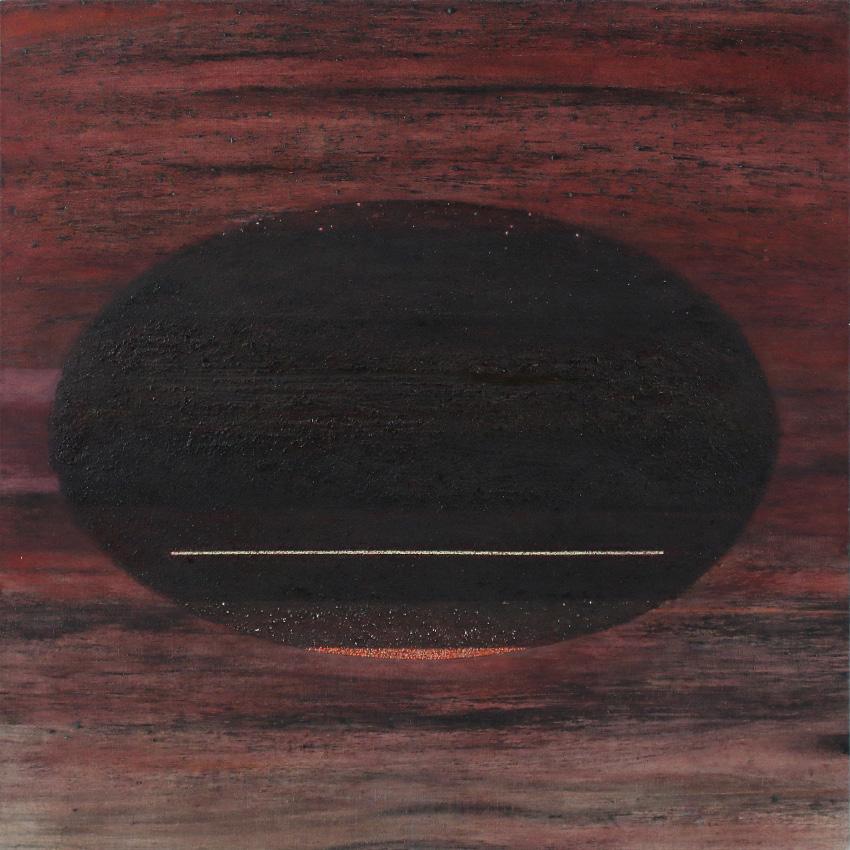
Ground, 1989 oil, isobutyl methacrylate, enamel and sand on canvas
77 x 106 inches
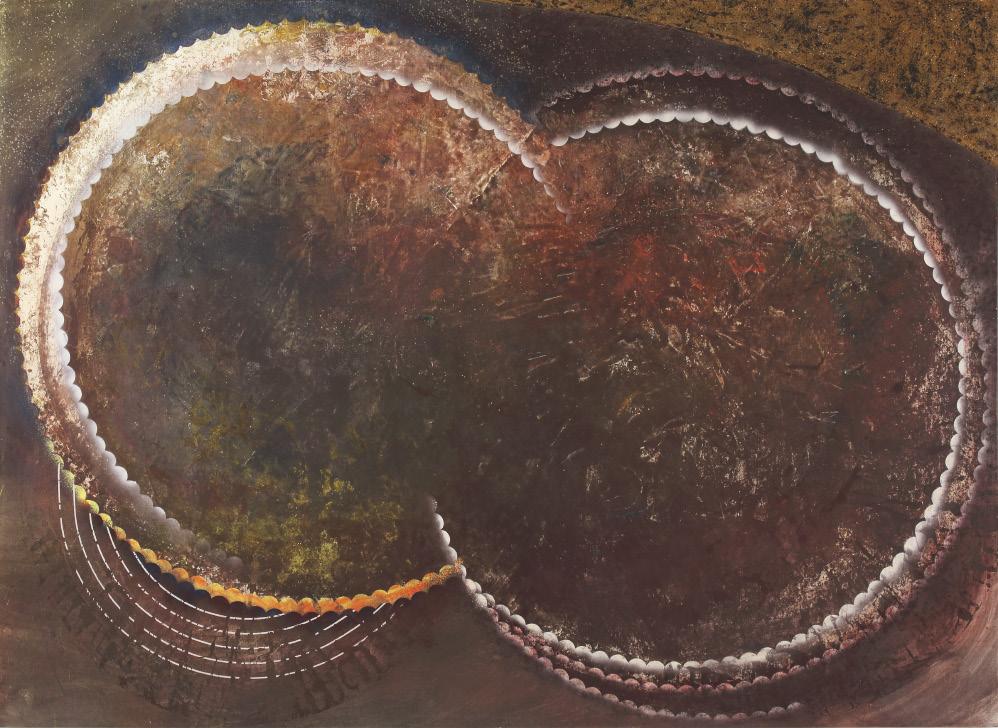
Unforgetting, 1994 oil, isobutyl methacrylate, sand and vermiculite on linen
4 x 72 inches
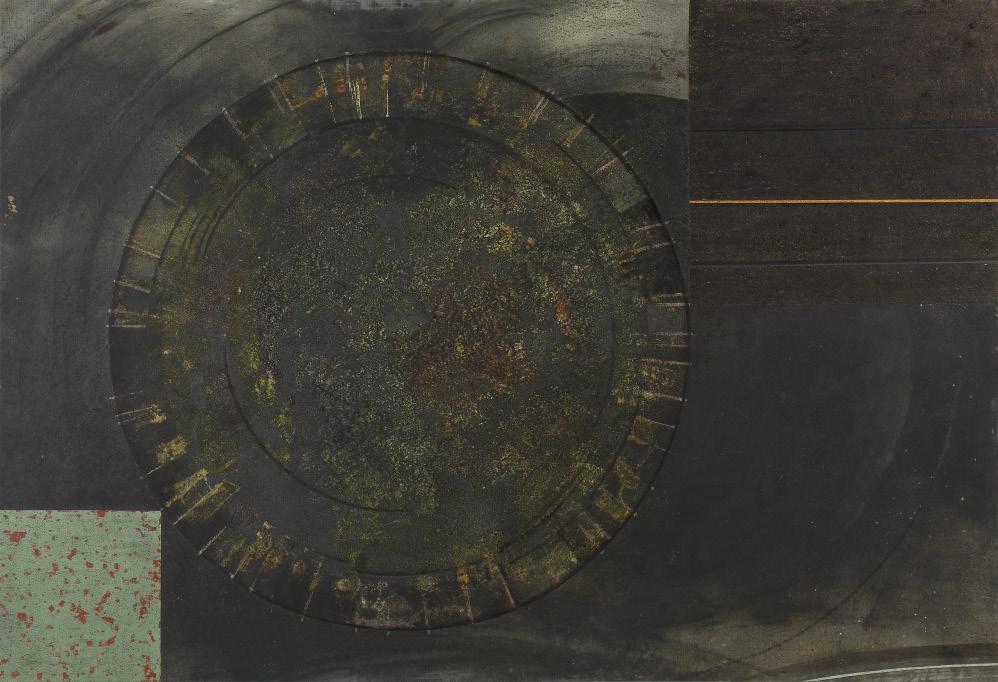
Crossing, 1990 oil, isobutyl methacrylate, shell, mica, bead and sand on canvas
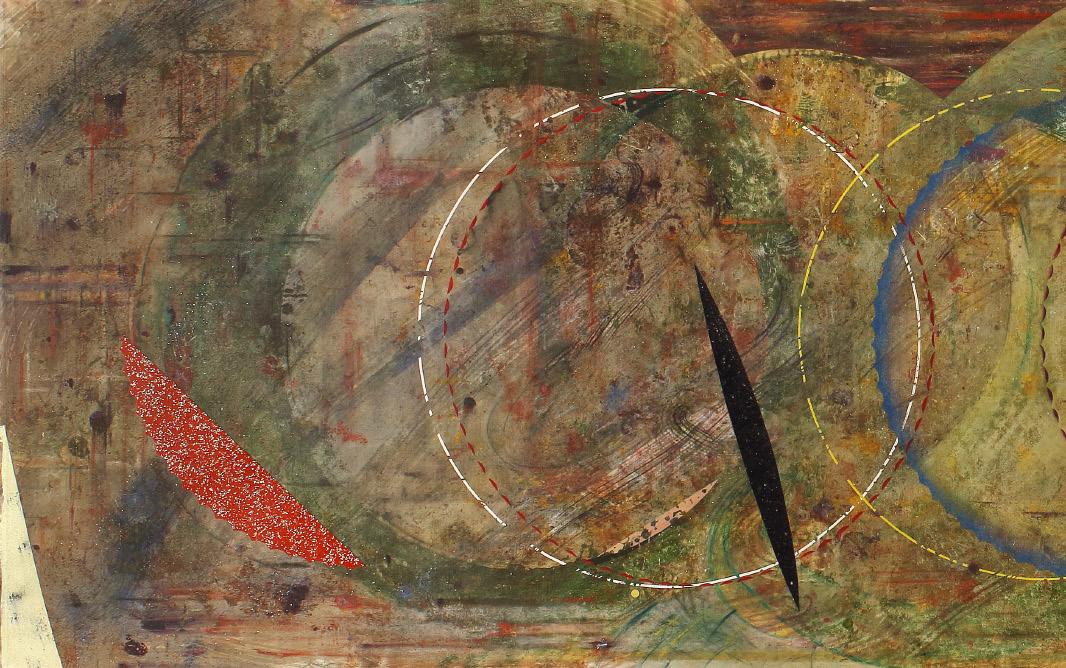
66 x 210 inches
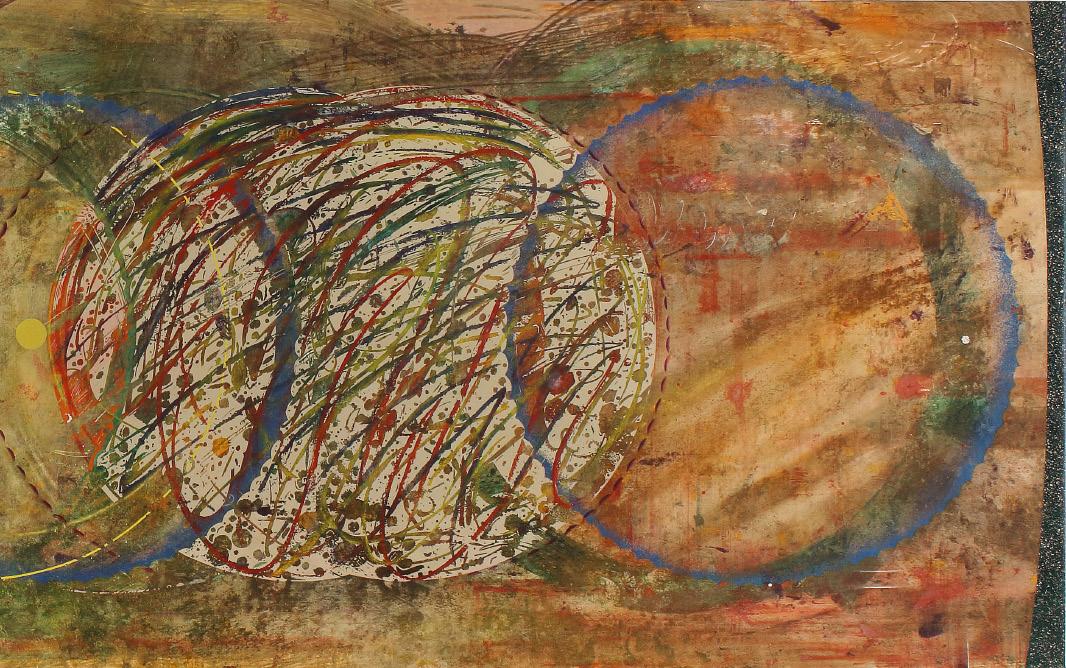
Such That, 2008 oil, isobutyl methacrylate, shell and bead on linen
77 x 91 inches
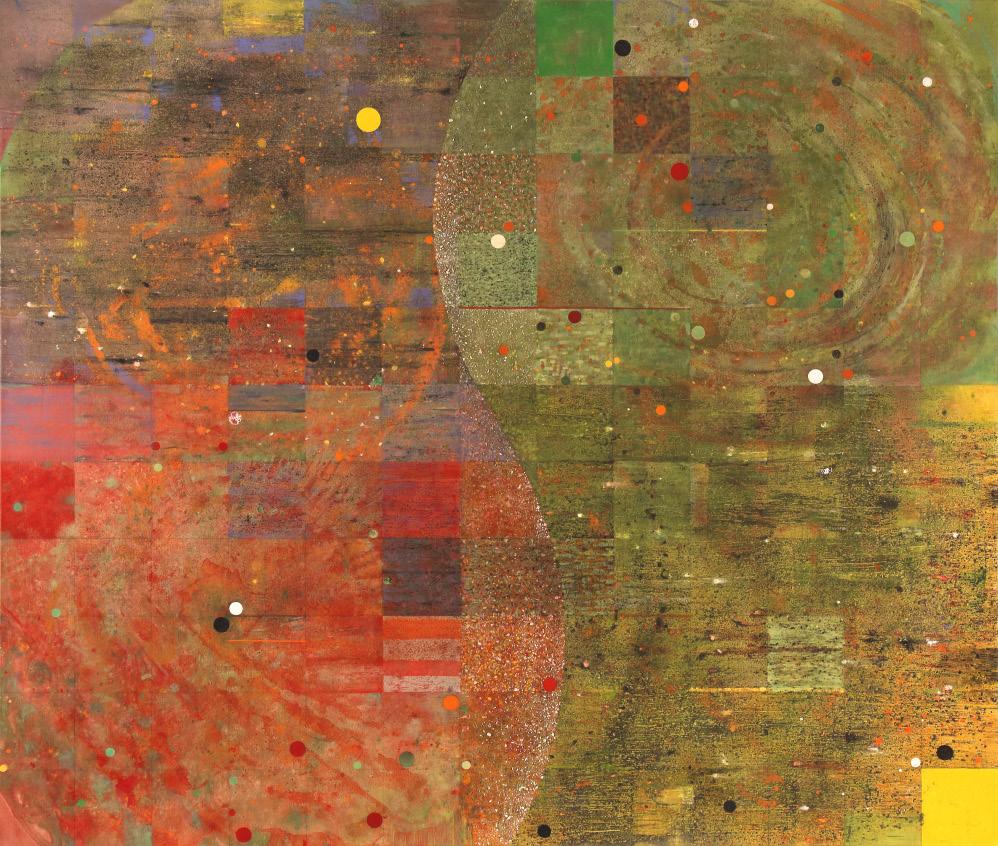
In and Of Itself, 1982 oil, isobutyl methacrylate on linen, mica, pearlessence and shell on canvas
79 x 100 inches
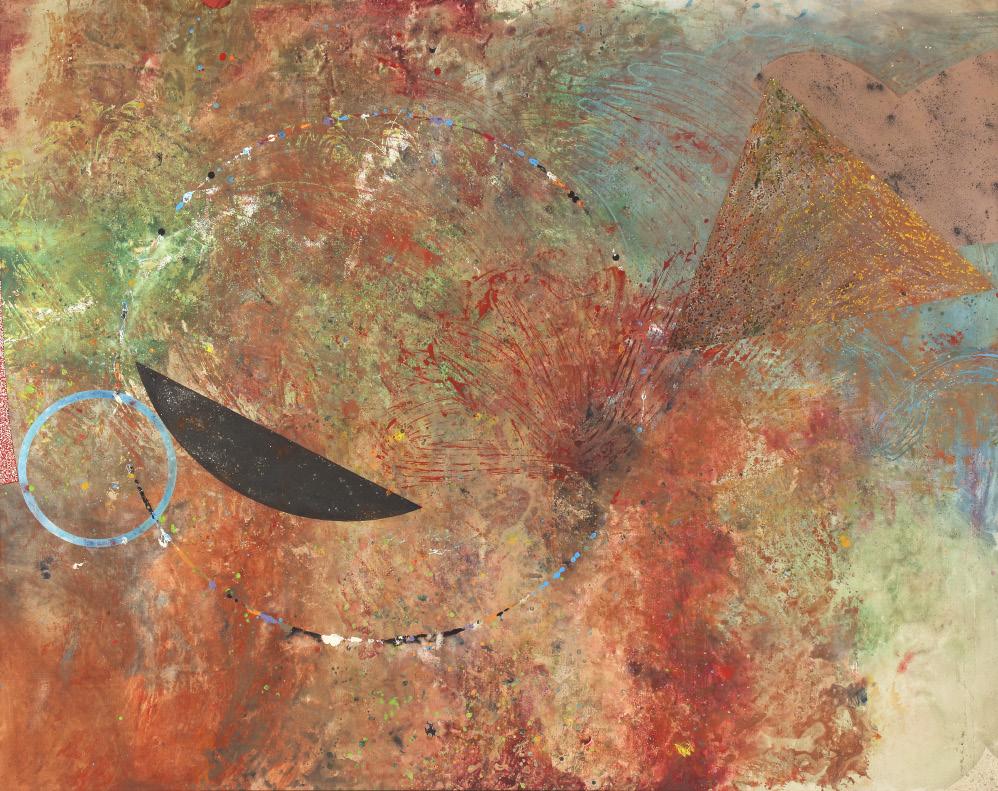
Innately Abounds, 1999 oil, isobutyl methacrylate, enamel, mica and bead on linen
49½ x 121 inches
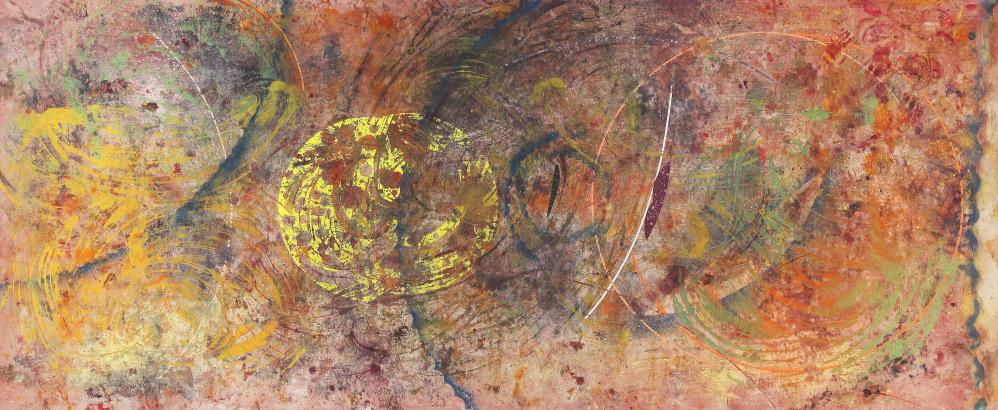
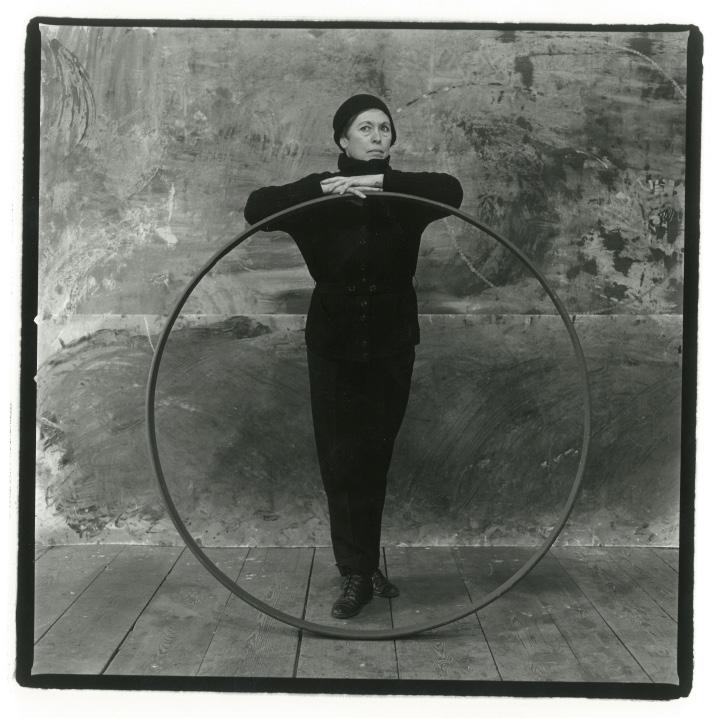
Pat Adams (b. 1928) was raised in Stockton, California, and began painting at the age of ten. She studied painting at UC Berkeley from 1945–49, where she first encountered the ideas of Hans Hofmann as she studied under his former students—Worth Ryder and Margaret Peterson O’Hagan, who had arranged for Hofmann’s migration to the States in 1932, among them. During her summers at Berkeley she pursued programs at the California College of Arts and Crafts (1945), the College of the Pacific (1946), and the Art Institute of Chicago (1948). In 1950, following her graduation from Berkeley the previous year, she attended a summer session at Brooklyn Museum Art School, remaining in the city after its completion. She received her first solo exhibition in 1954 at the Korman Gallery—later to be renamed the Zabriskie Gallery, which would continue to represent her through 2018. Her work was greatly motivated by her international travel during the 1950s: in Italy in 1951, after her first husband, painter and printmaker Vincent Longo was awarded a Fulbright scholarship, and in France in 1956, after she received her own Fulbright scholarship.
In the fall of 1964 she was invited by professor Paul Feeley to teach at Bennington College, where she joined the social circle of the famous “Green Mountain Boys,” including Kenneth Noland and Jules Olitski. In 1972 she married fellow Bennington professor R. Arnold Ricks, and they set off with her two sons on a four month journey through Egypt, Iran, Turkey, and all of Europe, which impacted her work significantly. She continued teaching at Bennington through 1993.
Her lengthy career has also included many teaching appointments at Yale, as both a visiting professor and artist, as well as the Rhode Island School of Design, among numerous other institutions across the country. She has received notable awards from the National Endowment for the Arts, the Academy of Arts and Letters, the National Academy of Design, and the College Art Association. In 1995 she was awarded the Vermont Governor’s Award for Excellence in the Arts. Her work has been the subject of over fifty solo exhibitions. She lives in Bennington, Vermont.
This catalogue is published on the occasion of the exhibition “Pat Adams: Large Paintings” on view from March 11 through April 22, 2023 at 291 Grand Street, New York 10002.
Cover detail: Naming, 1978
Catalogue © Alexandre Fine Art Inc.
Images © Pat Adams
Essay @ John Yau
Photography: Maria Stabio
Photographic Production: Maria Stabio
Editorial Production: Emma Crumbley
Design: Lawrence Sunden, Inc., Harrington Park, New Jersey
No portion of this catalogue, images or text may be reproduced, either in printed or electronic form, without the expressed written permission of the gallery.

